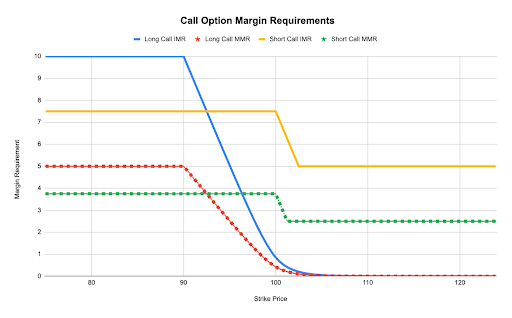Margin Requirements
Paradex currently supports Cross Margin for Perpetual Options, allowing traders to benefit from PnL offsetting across futures and options markets.
Cross Margin Parameters
The parameter values below are examples. The parameters are configurable by the underlying asset.
Core Idea
Cross Margin Requirements for Perpetual Options depend on their type (call/put), moneyness (out-of-money vs in-the money) and the mark price of the Option. Margin requirements vary by underlying asset.
Margin Calculation
Buying Options
Selling Options
Required Margin = min(Premium Multiplier × Option Mark Price, long_itm × Spot Price)
The margin plots below show the margin requirements for both call and put options across various strikes ranging from deep out the money (OTM) to in the money (ITM).
Examples
The margin plots below show the margin requirements for both call and put options across various strikes ranging from deep out the money (OTM) to in the money (ITM).
Call Options
Put Options
